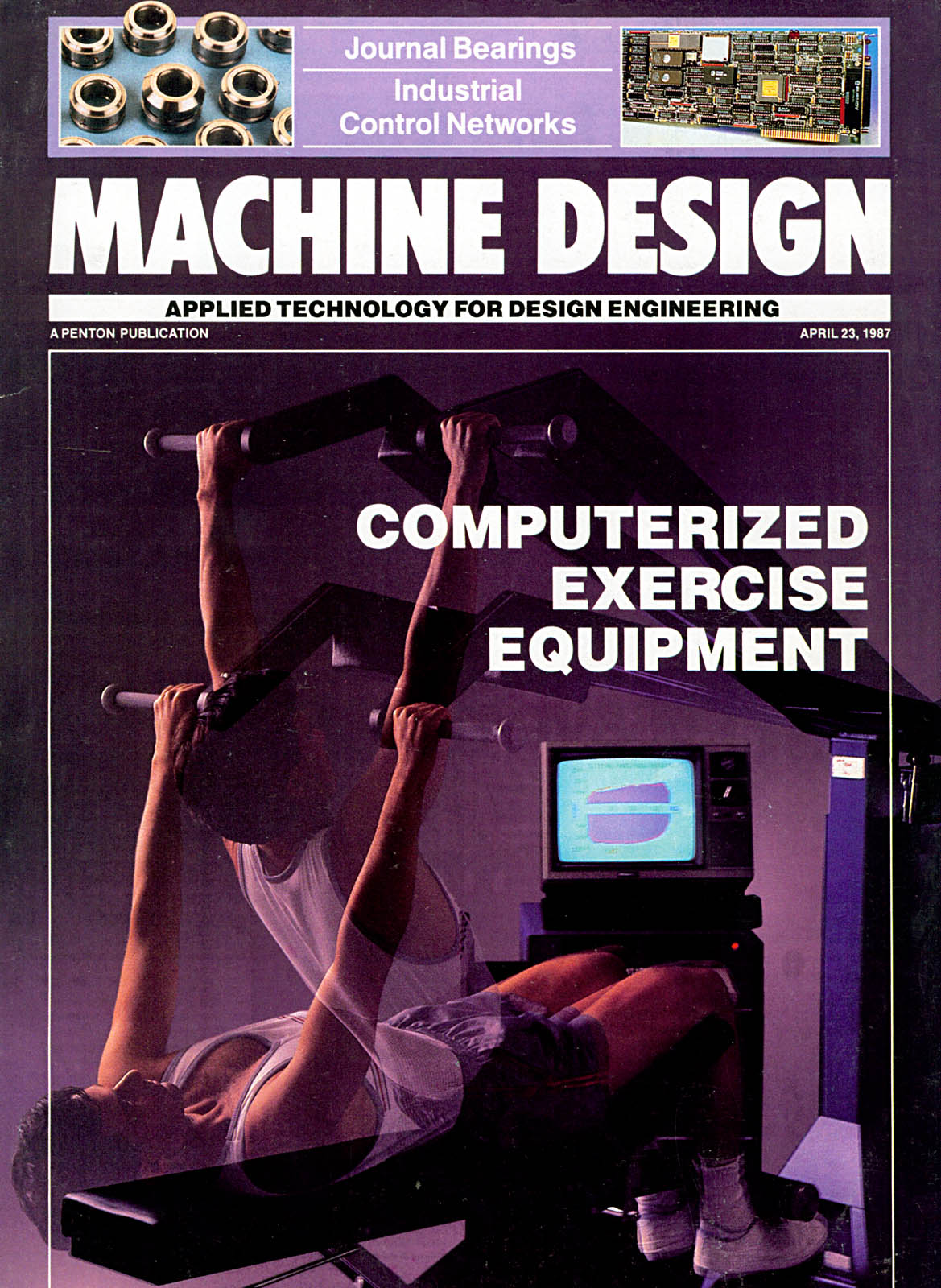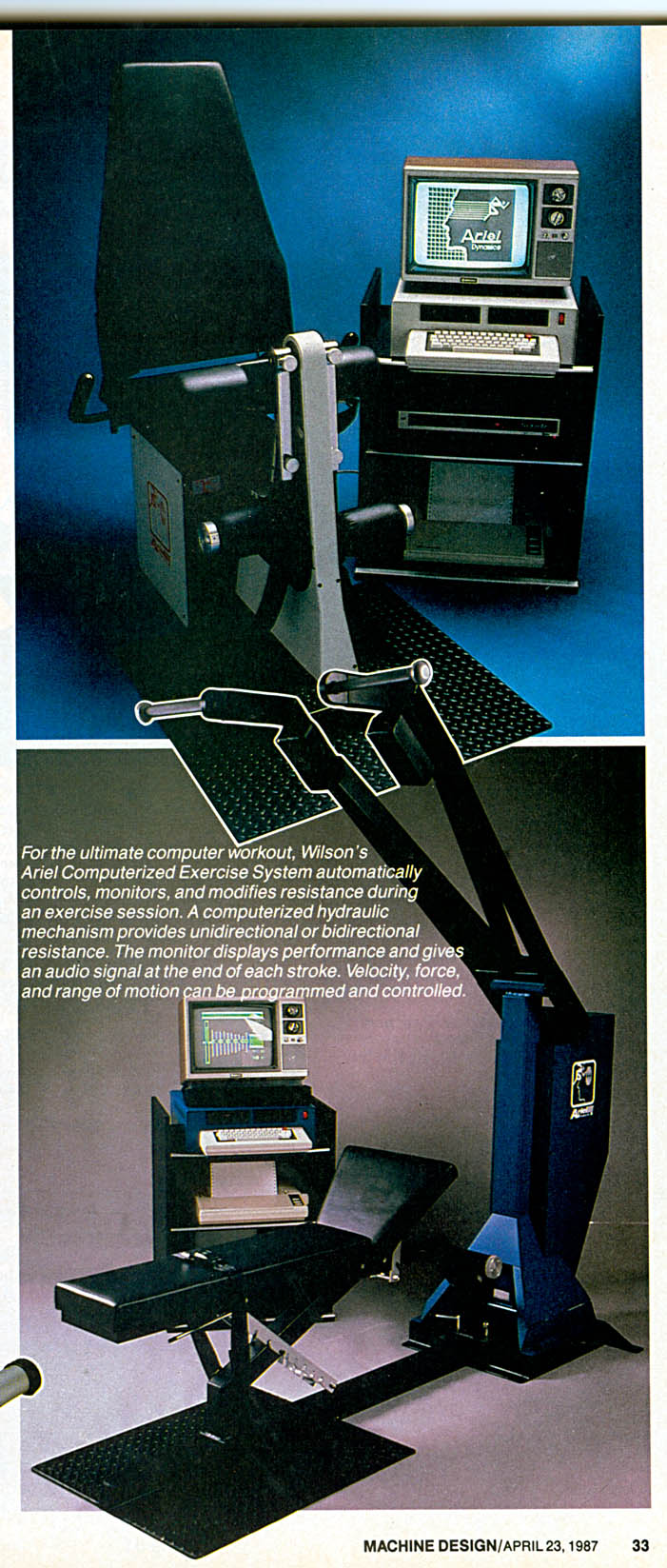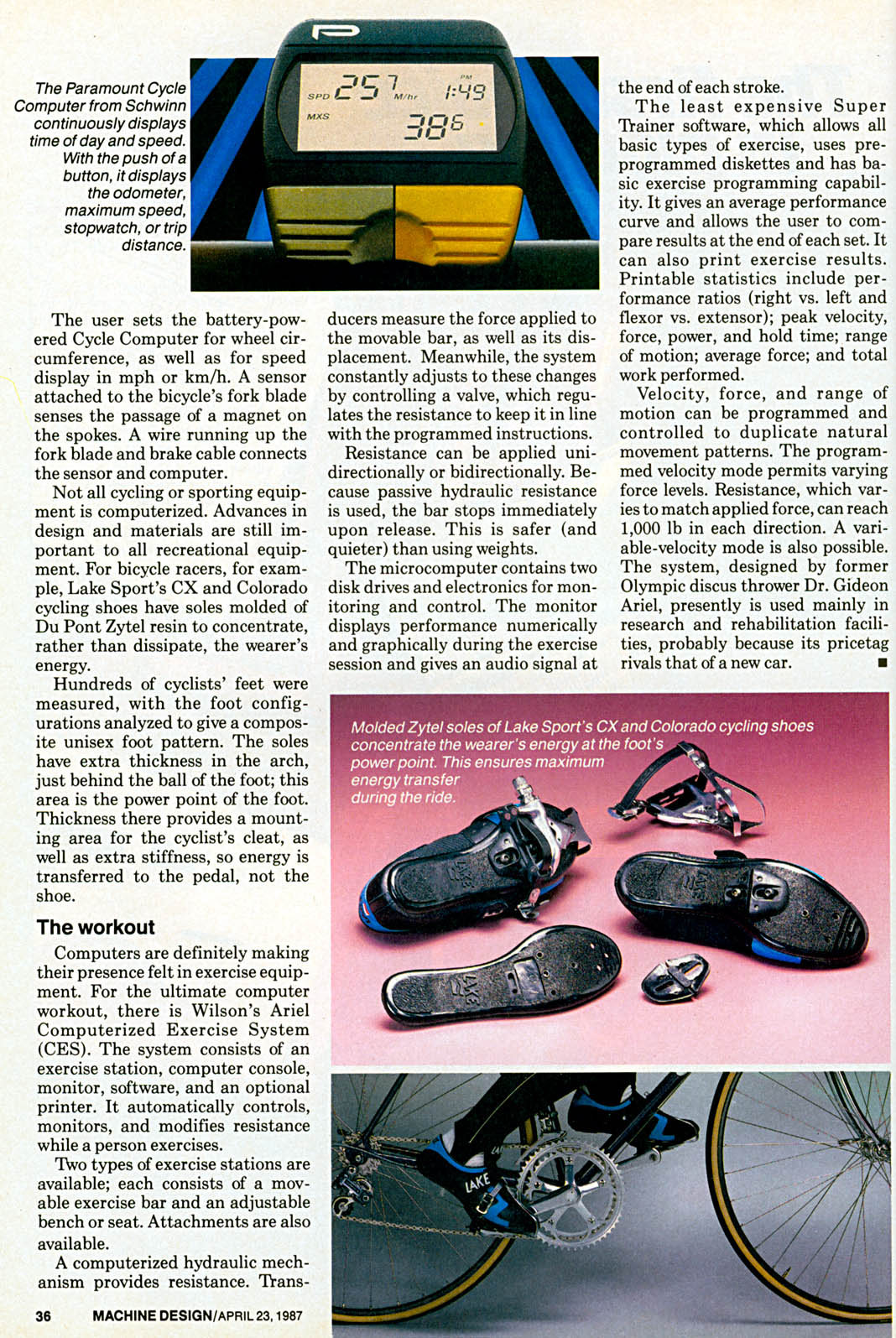Exercise Equipment Joins the Computer Age
Computerized Fitness equipment provides a better workout and more information on performance
By Stephanie Muraski in Machine Design on Thursday, April 23, 1987
Article Synopsis
The article discusses the integration of computer technology into exercise equipment, focusing on the Paramount Cycle Computer from Schwinn and Wilson's Ariel Computerized Exercise System (CES). The Schwinn Cycle Computer offers various features such as time display, speed, odometer, maximum speed, stopwatch, and trip distance. It is battery-powered and can be set for wheel circumference and speed display in mph or km/h.
On the other hand, the Ariel CES is a comprehensive exercise system that includes an exercise station, computer console, monitor, software, and an optional printer. It automatically controls, monitors, and modifies resistance during a workout. The system uses a computerized hydraulic mechanism for resistance and transducers to measure the force applied. The microcomputer monitors performance and provides an audio signal at the end of each stroke. The system also offers software that allows basic types of exercise, provides performance statistics, and can print exercise results.
The article also mentions that not all sporting equipment is computerized, highlighting the importance of design and material advances in recreational equipment. It uses Lake Sport's CX and Colorado cycling shoes as an example, which have soles molded of Du Pont Zytel resin to concentrate the wearer's energy.
Tip: use the left and right arrow keys
For the ultimate computer MA Adel Computerized Exercise System j controls, monitors, and modifies resist, an exercise session. A computerized 91 mechanism provides unidirectional or Win resistance The monitor displays performai an audio signal a
and range of mot
MACHINE DESIGN/APRIL23,1987
The Paramount Cycle
Computer from Schwinn continuously displays time of day and speed. With the push of a button, it displays the odometer, maximum speed, stopwatch, or trip distance.
The user sets the battery-powered Cycle Computer for wheel circumference, as well as for speed display in mph or km/h. A sensor attached to the bicycle's fork blade senses the passage of a magnet on the spokes. A wire running up the fork blade and brake cable connects the sensor and computer.
Not all cycling or sporting equipment is computerized. Advances in design and materials are still important to all recreational equipment. For bicycle racers, for example, Lake Sport's CX and Colorado cycling shoes have soles molded of Du Pont Zytel resin to concentrate, rather than dissipate, the wearer's energy.
Hundreds of cyclists' feet were measured, with the foot configurations analyzed to give a composite unisex foot pattern. The soles have extra thickness in the arch, just behind the ball of the foot; this area is the power point of the foot. Thickness there provides a mounting area for the cyclist's cleat, as well as extra stiffness, so energy is transferred to the pedal, not the shoe.
The workout
Computers are definitely making their presence felt in exercise equipment. For the ultimate computer workout, there is Wilson's Ariel Computerized Exercise System (CES). The system consists of an exercise station, computer console, monitor, software, and an optional printer. It automatically controls, monitors, and modifies resistance while a person exercises.
Two types of exercise stations are available; each consists of a movable exercise bar and an adjustable bench or seat. Attachments are also available.
A computerized hydraulic mechanism provides resistance. Transducers measure the force applied to the movable bar, as well as its displacement. Meanwhile, the system constantly adjusts to these changes by controlling a valve, which regulates the resistance to keep it in line with the programmed instructions.
Resistance can be applied unidirectionally or bidirectionally. Because passive hydraulic resistance is used, the bar stops immediately upon release. This is safer (and quieter) than using weights.
The microcomputer contains two disk drives and electronics for monitoring and control. The monitor displays performance numerically and graphically during the exercise session and gives an audio signal at the end of each stroke.
The least expensive Super Trainer software, which allows all basic types of exercise, uses preprogrammed diskettes and has basic exercise programming capability. It gives an average performance curve and allows the user to compare results at the end of each set. It can also print exercise results. Printable statistics include performance ratios (right vs. left and flexor vs. extensor); peak velocity, force, power, and hold time; range of motion; average force; and total work performed.
Velocity, force, and range of motion can be programmed and controlled to duplicate natural movement patterns. The programmed velocity mode permits varying force levels. Resistance, which varies to match applied force, can reach 1,000 lb in each direction. A variable-velocity mode is also possible. The system, designed by former Olympic discus thrower Dr. Gideon Ariel, presently is used mainly in research and rehabilitation facilities, probably because its pricetag rivals that of a new car.



